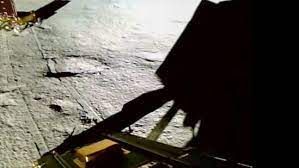India made a significant achievement by successfully landing Chandrayaan-3 on the lunar south pole. This makes India the 4th country to have successfully landed on the moon’s surface, following the US, China, and Russia.
“My friend Vikram Lander and I are in communication. We are in good condition. Exciting to explore the developments on the horizon,” conveyed by the Pragyan Rover through a tweet on ISRO Insight.
On Monday, ISRO reported that the Pragyan Rover came across a 4-meter diameter crater on the lunar surface, around 3 meters ahead of its location. The rover had been commanded to retrace its path and move down to a new and a much safer route. Among the lunar mission goals, the successful soft landing and mobility of the Pragyan rover have already been accomplished. The rover and lander is gathering scientific data vigilantly through their payloads. The rover is engaged in a race with time, where ISRO is trying to explore the South pole of the moon using the 6-wheeled vehicle.
The (LIBS) Laser-Induced Breakdown Spectroscope instrument carried out by the ‘Pragyan’ rover on Chandrayaan-3 has now identified the presence of sulphur near the south pole on the lunar surface. This marks the first in-situ measurement of an element. In addition, the instrument has detected some elements like sulphur, aluminium, calcium, iron, chromium, titanium, manganese, oxygen and silicon. The Hydrogen (H) search is still under process, the space agency tweeted. Earlier, the space investigator had conveyed its mission to unveil the mysteries of the Moon’s to the whole world.
Chandrayaan 3 had conducted measurements of lunar soil temperature, and revealed some outcomes. Approximately, the temperature span ranges from -10 degrees Celsius to about 70 degrees Celsius. Preferably, a temperature of -10 degrees Celsius was seen at a depth of 80 mm from the surface, the surface above is measured at around 60 degrees Celsius with a depth of nearly 20 mm.
Nilesh M Desai, Director of Space Applications Centre, highlighted the urgency of time-sensitive situations. He said, the total mission duration is just 14 days, which is equal to one lunar day, 4 days have already passed and the current objective lies in increasing experiments and researching the lunar surface for substantial progress within the remaining 10 days.

